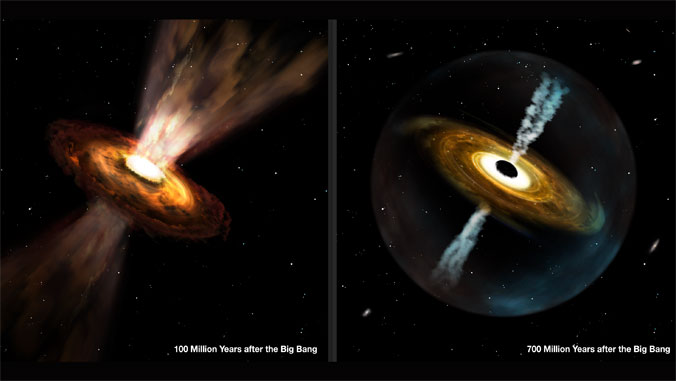
ʻImiloa Astronomy Center collaborated with 30 Hawaiian immersion kumu (teachers) to name another celestial discovery from the telescopes atop Maunakea. Researchers from three Maunakea Observatories; W.M. Keck Observatory, Gemini Observatory and University of Hawaiʻi-owned United Kingdom Infrared Telescope are behind the remarkable discovery of Pōniuāʻena, the most massive quasar known in the early universe.
Quasars are the most energetic objects in the universe, powered by supermassive black holes. Pōniuāʻena contains a monster black hole that challenges the current theories of supermassive black hole formation and growth in the early universe. The light seen from Pōniuāʻena traveled through space for more than 13 billion years since leaving the quasar just 700 million years after the Big Bang.
Pōniuāʻena, which means “unseen spinning source of creation, surrounded by brilliance,” was developed using traditional Hawaiian naming practices. This is the fifth world-renowned astronomical discovery named by the ʻImiloa program, A Hua He Inoa. UH Hilo Ka Haka ʻUla O Keʻelikōlani Hawaiian language Professor Larry Kimura has guided the program to demonstrate how Hawaiian language or ʻōlelo Hawaiʻi is merging with scientific knowledge.
- Related UH News story: Hawaiian naming program of celestial bodies well received at astronomy conference, January 8, 2019
“I am extremely grateful to have been part of this educational experience,” said Kauʻi Kaina, kumu and A Hua He Inoa participant. “It is indeed a rare learning opportunity and so relevant to apply these cultural values to further the well-being of the Hawaiian language beyond ordinary contexts—allowing the language to live throughout the universe.”
Other celestial body discoveries named by A Hua He Inoa include asteroids ʻOumuamua, Kamoʻoalewa and Kaʻepaokaʻāwela, and the black hole, Pōwehi.
According to researchers, Pōniuāʻena is a big step towards understanding the formation of early supermassive black holes and massive galaxies.

